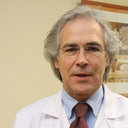Impact of admission hyperglycemia on stroke outcome after thrombolysis: risk stratification in relation to time to reperfusion.
מילות מפתח
תַקצִיר
OBJECTIVE
We evaluated the impact of admission hyperglycemia (HG) on stroke outcome in relation to the timing of reperfusion in patients treated with tissue plasminogen activator (tPA).
METHODS
We studied 138 consecutive stroke patients with a documented middle cerebral artery (MCA) occlusion treated with intravenous tPA <3 hours of stroke onset. Serum glucose was determined at baseline before tPA administration. HG was defined as a glucose level >140 mg/dL. National Institutes of Health Stroke Scale (NIHSS) scores were obtained at baseline and 24 hour. Transcranial Doppler monitoring of recanalization was conducted during the first 12 hour of stroke onset. mRS was used to assess outcome at 3 months.
RESULTS
Median baseline NIHSS score was 17 points. At baseline, 42 (37.3%) patients were hyperglycemic and 96 (62.7%) normoglycemic. Reperfusion was achieved <3 hours of stroke onset in 32 (23%) patients, between 3 to 6 hours in 49 (36%), 6 to 12 hours in 15 (12%), and in 32 (23%) the MCA remained occluded at 12 hours. A logistic regression model revealed that baseline NIHSS score >16 points (odds ratio [OR], 3.32; 95% CI, 2.18 to 24.7; P=0.032) and admission glucose level >140 mg/dL (OR, 5.65; 95% CI, 1.97 to 16.18; P=0.002) independently predicted poor outcome (modified Rankin scale, 3 to 6) at 3 months. After adjusting by age, stroke severity, site of MCA occlusion, and degree of recanalization, the contribution of HG for poor outcome was higher as shorter the time to reperfusion. The highest odds for poor outcome related to HG corresponded to patients who recanalized <3 hour (OR, 3.1; 95% CI, 1.8 to 14.3; P=0.002), as compared with those who recanalized between 3 and 6 hours (OR, 2.1; 95% CI, 1.1 to 16; P=0.034) and between 6 to 12 hours (OR, 1.1; 95% CI, 0.7 to 21; P=0.43). Moreover, baseline glucose level was negatively correlated (r=-0.45; P=0.001) with the degree of improvement in the NIHSS score at 24 hours after early (<3 hours) but not after delayed (>3 hours) or no recanalization.
CONCLUSIONS
The impact of admission HG on stroke outcome varies depending on the time to tPA-induced reperfusion. The detrimental effect of acute HG is higher after early than after delayed or no reperfusion. Ultra-early glycemic control before reperfusion may improve the efficacy of thrombolytic therapy.


